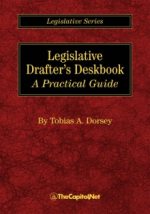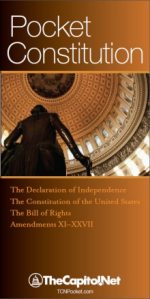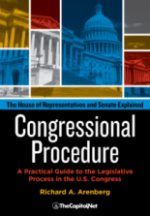From the Congressional Glossary – Including Legislative and Budget Terms
Line Item Veto (Item Veto)

Whenever the president signs a bill or joint resolution, the president may cancel in whole (1) any dollar amount of discretionary budget authority, (2) any item of new direct spending, and (3) certain limited tax benefits. In exercising this authority, the president must determine that such cancellation will (1) reduce the federal budget deficit, (2) not impair any essential government functions, and (3) not harm the national interest. Provisions canceled never become effective unless Congress reverses the action of the president by enacting a “disapproval bill.” On June 25, 1998, the Supreme Court in Clinton v. City of New York, 524 U.S. 417 (1998) ruled the “line-item veto law violates a constitutional requirement that legislation be passed by both houses of Congress and presented in its entirety to the president for signature or veto.” See the Presentment Clause, Article 1, Section 7, of the U.S. Constitution.
A phrase used to describe an executive power to veto or “cross out” only certain parts of legislation while allowing the rest of the legislation to become law. At the federal level, legislation granting the President a line item veto has been declared unconstitutional. The line item veto exists at the state level because some state constitutions grant the power to the governors in forms that vary from state to state. Some states only permit line item vetoes in bills appropriating money.
Clinton v New York Puppet Show
Several federal legislative initiatives have been introduced in Congress over the years to give the President expanded or enhanced rescission or line item veto authority. In 1996 the Line Item Veto Act was enacted authorizing the President, after signing a bill into law, to cancel in whole any dollar amount of discretionary budget authority, any item of new direct spending, or any limited tax benefit if the President made certain determinations. Granting the President line item veto authority would require a constitutional amendment. See also “Account” in the Department of the Treasury’s Annual Report Appendix.
See also
- Statutory Limit on the Public Debt / Budget Control Act of 2011
- Enhanced Rescission and Expedited Rescission under Rescission
- Chapter 6.G. The President; Chapter 7.P. Line-Item Veto; in Congressional Procedure
More
- “Line Item Veto,” CRS Report RL33365 (19-page PDF
 )
) - “Legislative Line Item Veto Act of 2006: Background and Comparison of Versions,” CRS Report RL33517 (21-page PDF
 )
) - “Item Veto and Expanded Impoundment Proposals: History and Current Status,” CRS Report RL33635 (38-page PDF
 )
) - “Federal Budget Process Reform in the 110th Congress: A Brief Overview,” CRS Report RL33818 (15-page PDF
 )
) - “Item Veto: Budgetary Savings,” CRS Report RS22155 (8-page PDF
 )
) - “Item Veto and Expanded Impoundment Proposals,” CRS Issue Brief IB89148 (22-page PDF
 )
) - “Rescission Actions Since 1974,” CRS Report RL33869 (34-page PDF
 )
)
Courses
- Congressional Operations Briefing – Capitol Hill Workshop
- Drafting Federal Legislation and Amendments
- Writing for Government and Business: Critical Thinking and Writing
- Custom, On-Site Training
- Drafting Effective Federal Legislation and Amendments in a Nutshell, Audio Course on CD
- Congress, the Legislative Process, and the Fundamentals of Lawmaking Series, a Nine-Course series on CD
Publications

Legislative Drafter’s Deskbook: A Practical Guide

Pocket Constitution

Citizen’s Handbook to Influencing Elected Officials: A Guide for Citizen Lobbyists and Grassroots Advocates

Congressional Procedure
CongressionalGlossary.com, from TheCapitol.Net
For more than 40 years, TheCapitol.Net and its predecessor, Congressional Quarterly Executive Conferences, have been teaching professionals from government, military, business, and NGOs about the dynamics and operations of the legislative and executive branches and how to work with them.
Our custom on-site and online training, publications, and audio courses include congressional operations, legislative and budget process, communication and advocacy, media and public relations, testifying before Congress, research skills, legislative drafting, critical thinking and writing, and more.
TheCapitol.Net is on the GSA Schedule, MAS, for custom on-site and online training. GSA Contract GS02F0192X
TheCapitol.Net is now owned by the Sunwater Institute.
Teaching how Washington and Congress work ™

